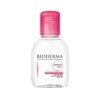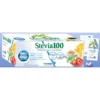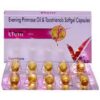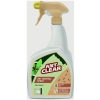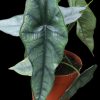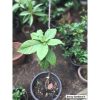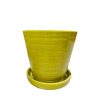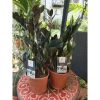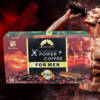What are Chemistry Laboratory Apparatus?
Chemistry Lab Apparatus are laboratory equipment that are used to study the substances by which matter is composed. These lab supplies makes it possible to investigate the properties and reactions of such matters and to give evaluations that will form or produce new substances.
At Allschoolabs, we distribute over 100,000 laboratory apparatuses across the branches of science, engineering and medicine. You can see our full chemistry laboratory apparatus list Here
We encourage every tutor, student and general lab user to acquaint with these chemistry lab apparatus. Chemistry can be boring and cause a drowsy class when taught theoretically alone.
If you need a vibrant and practical-enthusiast chemistry teacher, please reach us via our contact channels to get a tutor close to you. This service is exclusive to Nigerian residents only.
We love practical chemistry at Allschoolabs. And we think that it is better assimilated practically.
Our Top 20 Chemistry Lab Apparatus
- Weighing balance
- Burette
- Pipette
- Beaker
- Volumetric flask
- Test tube
- Acids
- Bases
- Indicators
- Retort stands
- Dropper/dropping bottle
- stirring rod
- Thermometer
- Tripod stand with wire gauze
- Bunsen burner
- Crucibles
- Tong
- Forceps
- Measuring cylinder
- Funnel
In Details: Top 20 Chemistry Lab Apparatus
1. Weighing Balance
A weighing balance is a laboratory instrument that is used to determine the weight or mass of a particular matter. It is available in different designs, sizes and diverse weighing capacities. They are a most essential tool in every laboratory.
Some of the use of the weighing balance equipment in a chemistry lab include the weighing of sample amounts. It is also used to determine density, for quality control testing, and many more.
2. Burette

Burette is also called biuret and pronounced the same. It is a chemistry laboratory apparatus used in quantitative chemistry to dispense and measure variable amounts of liquid or sometimes gas. It is a long graduated glass tube with a stopcock, screw or pinch cork device at one end specially designed for titration.
3. Pipette
A Pipette is used in the chemistry lab for dispensing small amounts of liquid in mL units. For smaller amounts of liquid, a micropipette is more efficient.

4. Volumetric Flask
The volumetric flask is by design calibrated to contain a precise volume of liquid at a certain temperature. measuring accurate volumes of liquid materials for laboratory experiments.
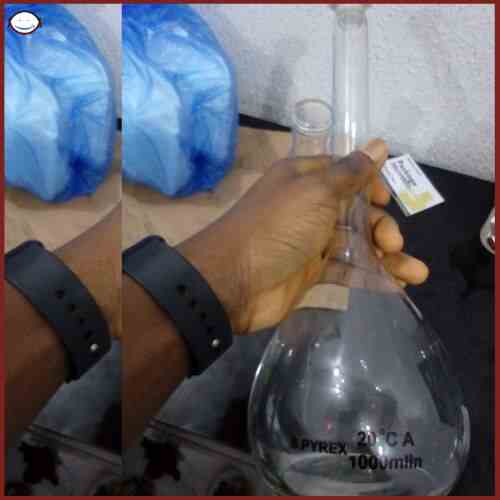
Volumetric flasks are also called measuring flask or graduated flask. They come in several standard sizes and are proven to be the most accurate for dilutions and preparation of solutions in the laboratory.
5. Test Tube
Test tube, also known as a culture tube or sample tube is to hold, heat, or mix substances used in experimentation. It is a common piece of lab glass with an average length of a human middle finger. Test tubes are arranged in test tube racks of different sizes.
6. Acids
Acids are very important chemistry lab chemicals. From the production of fertilizers, cleaning of metals including gold, to the manufacturing of other chemicals and drugs.
Hydrochloric acid is one of the five most popular chemistry lab chemical. It is used for many reasons including the preparation of hydrogen gas. Among many of its uses in a chemistry laboratory, is its use for titration. Also, it is used for ph control, titration and preparation of compounds.
Other acids seen in secondary school labs are sulphuric acid, nitric acid, acetic acid and more.
7. Bases
Bases are bitter to taste and alkaline in nature. Some of them are very good conductors of electricity. Among chemistry lab chemicals, bases functions as reagents or catalytic mediums in several reactions. Bases are are able to form Hydroxyl (OH-) ions in an aqueous solution.
Common bases in the high school laboratory will include sodium hydroxide, potassium chloride, and many others.
8. Indicators
Indicators are used to detect the end point of a chemical titration. The color of the indicator changes when the acidity of the solution, reaches a specific range of values.

Chemical indicators found in the laboratory include Phenolphthalein, Methyl Orange, Methyl Red, Litmus papers and a few others.
9. Retort Stands
Retort stands are used in the chemistry/chemical laboratory to support tubes for heating tubes and other glassware on a Bunsen burner. In general, it is used for distillation, filtrations and titrations. It composes of a clamp, ring, heavy base and a long straight rod.
10. Dropper/dropping bottle
Among chemistry equipment, droppers are an alternative to pipettes. A dropper or a dropping bottle helps you to dispense reagent into a solution at a careful and consistent rate. It is leak proof and has proven to be better accurate than pipettes when it pertains to very small mls of dispensing.
11. stirring rod
As the name implies, the sole purpose of a stirring rod is to allow efficient mixing in a mixture. In cases where there are no automatic stirrers, the stirring rod comes in handy to mix liquids, solids , or liquids and solids whether on or off a heat source.

The stirring rod may be a stainless, glassware or plastic vertical rod. It is a most indispensable tool in the lab.
12. Thermometer
A laboratory thermometer is used to measure the degree of cold or heat to a particular space or body. There are many kinds of thermometers and for different uses. They include the clinical thermometer (0 – 42degs) used to check body temperature, industrial thermometers, ASTMs and more.
The standard ranges for thermometers are -10 to 110 degrees Celsius, 0 – 360degrees Celsius.
13. Laboratory tripod
The laboratory tripod is a three legged stand that allows a space in between for a Bunsen burner or a gas heater.
The tripods often must be used with a wire gauze. The wire gauze is a sheet of thin strings of metals that looks like a net. It is placed over the tripod stand with a Bunsen burner underneath for heating.

14. Bunsen burner
The Bunsen burner is named after Robert Bunsen used in the chemistry laboratory. This apparatus is designed to heat substances, for combustion and sterilization on high heat.

The burner produces a single open, smokeless flame sponsored from a gas source.
15. Crucibles
The laboratory crucible is usually made from metal or porcelain. The crucible is a chemistry laboratory equipment that is used to burn, melt or mix solid chemical compounds over a burner or in a furnace.
It is designed to hold any kind of matter and can endure extreme temperatures. It shields its content from melting under the high temperature of heating.
16. Tongs
The crucible tong is used in conjunction with crucibles. It is used to lift hot crucibles from a furnace or oven or from containers that should not be done with the bare hands. They are also used to lift up beakers and other flasks.
Crucible tongs are tools like scissors with two pieces of curved metals that can be cleaved together at will to lift different sizes of objects.
17. Forceps
Forceps or tweezers are a handheld chemistry laboratory apparatus used for grasping, stabilizing and moving objects. They also help to pass ligatures, stabilize and manipulate surgical needles during suturing.

18. Measuring cylinder
The measuring cylinder also called graduated cylinder or mixing cylinder, is a very common piece of laboratory glassware used to measure the volume of liquids.
It comes in different volumes and legibly graduated to give accurate reading of its content. Graduated cylinders are made of glass or plastics.
19. Funnel
The laboratory funnel is a channel that is wide at the top and narrow at the bottom. It is designed to guide liquid or fine grained substances into containers with small openings.
Funnels are either made as plastics or glassware with several different sizes proportional to the opening of the receiving medium.
20. Beaker
A beaker is a plastic or glass container, cylindrical glass in shape and used for holding liquids. In a chemistry laboratory, this equipment is used to hold solutions and mixtures, stir, measure liquids and or heat them.

Beakers come in various sizes. They are shaped like a cylinder, with a flat base, and have a small pout for pouring.
Other common chemistry lab apparatus
There are many other chemistry lab equipment that come in handy in the science laboratory and are often needed. A few not mentioned are mortar and pestle, evaporating dish, wash bottle, paper tape , lab coat and more. Kindly visit our high science equipment link to find out our top 100 list
See Photos of all these Chemistry Laboratory Apparatus on our Google profile

